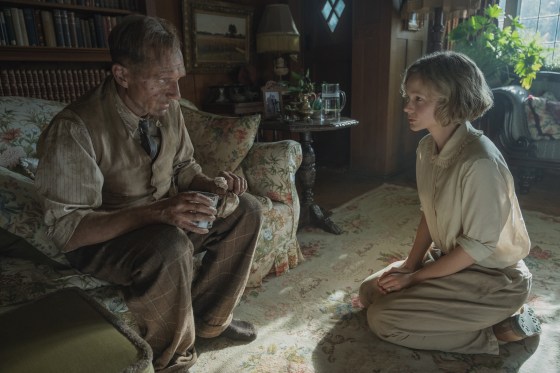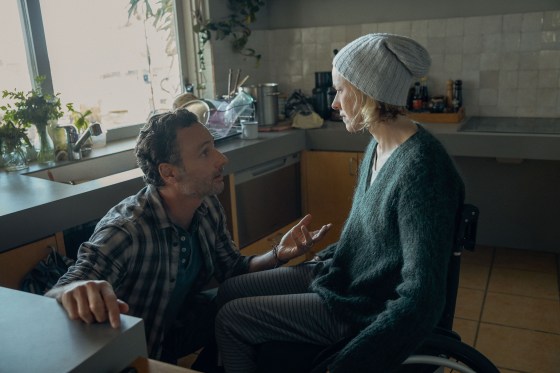This February, Zendaya reunites with Euphoria creator Sam Levinson for the Netflix original film Malcom & Marie. The drama, which releases Feb. 5 and is written and directed by Levinson, stars Zendaya and John David Washington as a Hollywood couple reckoning with their relationship over the course of one turbulent night.
The third and final installment of the To All the Boys I’ve Loved Before film series, based on Jenny Han’s YA novels of the same name, will arrive on Feb. 12. In To All the Boys: Always and Forever, eternal romantic Lara Jean Covey (Lana Condor) and her teen-dream boyfriend Peter Kavinsky (Noah Centineo) consider the future as they graduate from high school and prepare for college.
There’s no shortage of laughs when comedian Tiffany Haddish returns for a second season of her Netflix original comedy series, Tiffany Haddish Presents: They Ready on Feb. 2. The series, which features six of Haddish’s favorite up-and-coming comedians, boasts a wealth of talent this season, including Saturday Night Live’s Dean Edwards and Late Night with Seth Myers’ Erin Jackson.
Here’s everything new on Netflix this month—and everything set to leave the streaming platform.
Here are the Netflix originals coming to Netflix in February 2021
Available Feb. 2
Kid Cosmic
Mighty Express, season 2
Tiffany Haddish Presents: They Ready, season 2
Available Feb. 3
All My Friends Are Dead
Black Beach .
Firefly Lane
Available Feb. 5
Hache, season 2
Invisible City
The Last Paradiso
Little Big Women
Malcolm & Marie
Space Sweepers
Strip Down, Rise Up
Available Feb. 10
Crime Scene: The Vanishing at the Cecil Hotel
The Misadventures of Hedi and Cokeman
Available Feb. 11
Capitani
Layla Majnun
Red Dot
Squared Love
Available Feb. 12
Buried by the Bernards
Nadiya Bakes
Hate by Dani Rovira
To All The Boys: Always And Forever
Xico’s Journey
Available Feb. 15
The Crew
Available Feb. 16
Animals on the Loose: A You vs. Wild Movie
Available Feb. 17
Behind Her Eyes
Hello, Me!
MeatEater, season 9 – part 2
Available Feb. 18
Thus Spoke Kishibe Rohan
Available Feb. 19
I Care A Lot
Tribes of Europa
Available Feb. 20
Classmates Minus
Available Feb. 23
Brian Regan: On The Rocks
Pelé
Available Feb. 24
Canine Intervention
Ginny & Georgia
Available Feb. 25
Geez & Ann
High-Rise Invasion
Available Feb. 26
Bigfoot Family
Caught by a Wave
Crazy About Her
Here are the TV shows and movies coming to Netflix in February 2021
Available Feb. 1
The Bank Job
Beverly Hills Ninja
Eat Pray Love
Inception
Love Daily, season 1
My Best Friend’s Wedding
My Dead Ex, season 1
National Lampoon’s Christmas Vacation
The Patriot
Rocks
Shutter Island
The Unsetting, season 1
Zac and Mia, seasons 1-2
Zathura
Available Feb. 6
The Sinner: Jamie
Available Feb. 8
iCarly, seasons 1-2
War Dogs
Available Feb. 10
The World We Make
Available Feb. 11
Middle of Nowhere
Available Feb. 13
Monsoon
Available Feb. 16
Good Girls, season 3
Available Feb. 21
The Conjuring
The Conjuring 2
Available Feb. 24
Two Sentence Horror Stories, season 2
Available Feb. 26
Captain Fantastic
No Escape
Our Idiot Brother
Here’s what’s leaving Netflix in February 2021
Leaving Feb. 4
Erased
Leaving Feb. 5
Lila & Eve
Woody Woodpecker
Leaving Feb. 7
Don’t Knock Twice
Swiped
Leaving Feb. 10
A Bad Moms Christmas
Leaving Feb. 11
The Other Guys
Leaving Feb. 14
Alone in Berlin
Hostiles
Leaving Feb. 16
Brave Miss World: Collection 1
Leaving Feb. 19
Bates Motel, seasons 1-5
Leaving Feb. 20
A Haunted House
Leaving Feb. 21
Trespass Against Us
Leaving Feb. 24
Dolphin Tale 2
Leaving Feb. 26
The Frozen Ground









